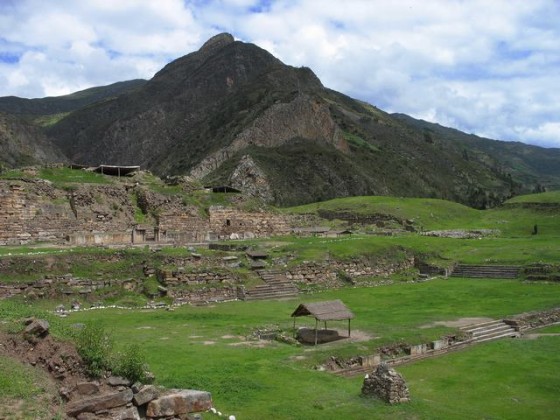Peru in South America is the home of many Incan as well as pre-Incan archaeological sites of which Chavin de Huantar is one of the stunning sites that prospered before Christ. Tucked on the Andes’ sheer slope, this World Heritage Site is one of the attractions, which is explored while trekking in Cordillera Blanca or Huayhash. Historically, it reveals much about the pre-Incan culture called Chavin that was very famous between 900 and 200 BC. The excavated artifacts say that Huantar was a sacred town to hold the oracles, rituals, and worship; which it was a grand ceremonial center as recognized by the Chavin culture. Besides this religious significance, Huantar also boasts much spiritual significance in the sense that the cosmic plus natural forces meet here – evident in from of hot springs as well as the majestically soaring Huantsan peak.
For the tourists, today, there are several striking stone temples, artifacts, stone sculpting, as well as other ruins that date back to 1200 BCE. It is easy to access this site from Lima by driving for 160 miles. When you reach the entrance, do not get in without exploring a small museum that holds the genuine carvings and a few ceramics found here. This will give you a better idea of the site that you are about to discover.

As Chavin de Huantar was erected in many phases, it was used for different purposes – ceremonial center after which it also served as the home of residents who used to adhere to a distinct tradition. The whole plaza exists in the shape of U whose heart holds a submerged round court, whereas the inner spaces are decorated with the carvings as well as sculptures. The fact that the site was the venue of religious events is evident due to the presence of buildings like Temples A, B, C and D; New Temple; Old Temple; Circular Plaza; and Major Plaza. On the site, the most popular monument is the big flat-topped pyramid that is actually a temple.
Talking about the Circular Plaza, it is considered very holy as on this open-air ground, several rituals were held. Further, it was also an atrium via which one could reach the north staircase to enter the Temple A that flanks the plaza along with Temples B and C on three sides. One of the most ancient edifices is the Old Temple with an inward-facing aspect, passageways around a round courtyard, and stone monuments and obelisks with relief carvings showing jaguars, caymans, and anthropomorphic aspects inside. Located centrally is the Lanzon Gallery wherein the Lanzón sculpture was kept – the carving of the main deity featuring a human body, but has a feline head. In the New Temple, you will also see the Lanzon deity holding a strombus shell as well as a Spondylus shell in right and left hands respectively, gallery, and several relief sculptures. Here, there are also burial sites that are the home of burial goods and other precious items.
A broad staircase in the square leads to a big pyramid that is called the Castilla. Other highlights are Tello Obelisk, Raymondi Stela (currently at the Lima’s Museo de la Nacion), the ‘Cabezas Clavas’ detail (Nail-Heads) on the façade (one is visible today), drainage channels, and underground chambers.
Reaching the site
Most of the time, travelers come here from Huaraz on one day trip, from where driving on a twisting path that is unpaved takes 4 hours. But, it has been proposed that the road will be cobbled after which the journey will take only two hours.
Guided tour
Check out for the Chavin or Pablo Tours that start at 9 in the morning for US$15 per person and ends after 11 hours. You can imagine from this as to how much is to be known of this unknown culture. And this one is really recommended for their good guides who are very knowledgeable and are very kind in answering even the most stupid questions – really, they don’t mind! So, it is better to tour this site with this tour operator.
Tip
Some of the artifacts are in the Lima’s Museo de la Nación due to which I would recommend you to visit this first.